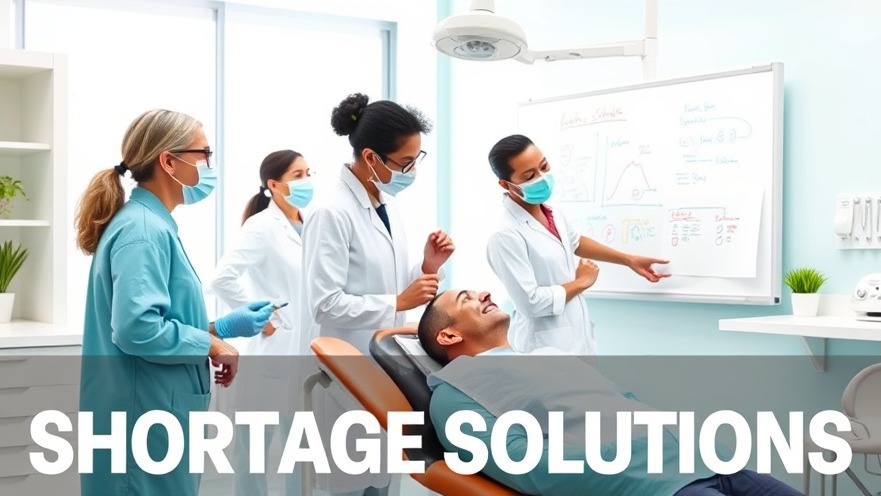
The Growing Dental Shortage Crisis: A Closer Look
The number of federally-designated dental professional shortage areas in the U.S. has reached an alarming milestone, climbing to a total of 7,229 areas needing dental practitioners. This figure showcases a significant increase as nearly 350 new dental shortage areas emerged in just one year, according to the latest insights from the Health Resources and Services Administration (HRSA).
Understanding the implications of this escalation is critical for dental professionals like Dr. Emily Johnson. In a landscape where patient needs outweigh service availability, dentists must navigate these challenges not only to ensure the sustainability of their practices but also to address the growing demands of their communities.
Current Trends and Implications for Dentists
Since early 2024, the trajectory in the number of dental shortage areas has been alarming:
February 2024: 6,820 shortage areas, 9,781 practitioners needed
June 2024: 6,842 shortage areas, 9,926 practitioners needed
December 2024: 7,067 shortage areas, 10,153 practitioners needed
September 2025: 7,229 shortage areas, 10,471 practitioners needed
This data highlights a worrying trend: the consistent increase in areas lacking adequate dental services is not merely a statistic but a significant barrier to providing essential healthcare. For practices like Dr. Johnson's, it means adapting to shifts in patient flow and demand, often working with fewer resources.
Future Projections and Opportunities
Prospects suggest that this shortage will continue unless addressed holistically. The growth of these deficit areas presents opportunities for innovation within the dental field. Advanced technologies like tele dentistry and AI-driven patient management can alleviate some burdens as dental practices increasingly look to enhance efficiency. Furthermore, expanding educational pathways through dental schools will be crucial in cultivating new talent and meeting the rising demand.
Addressing Shortage Areas: The Role of Community Engagement
Engaging with local communities is not just beneficial; it's essential. Dentists, including Dr. Johnson, have the opportunity to lead initiatives aimed at educating families about oral health. By establishing trust and open communication, community outreach can help fill the service gaps.
Additionally, forming collaborative partnerships with local colleges or health organizations can provide new avenues for dental education and outreach, particularly in underserved areas. This engagement showcases the commitment of dental professionals to their communities and helps build the foundational trust necessary for long-term success.
Perspectives from the Field: Diverse Opinions on Solutions
While the data surrounding dental shortages point to a clear need for immediate action, there are varied opinions on what solutions should take precedence. Some experts suggest revisiting regulatory policies that restrict the practice of dental hygienists or dental therapists, while others advocate for a more extensive push towards technology integration in everyday dental practice.
This diversity of thought adds complexity to the discussion but underscores the urgency of collaborative approaches to finding sustainable solutions to the shortage problem.
Final Thoughts and Moving Forward
As the number of dental shortage areas continues to grow, it becomes increasingly clear that immediate and long-term strategies must be implemented. Dentists and policymakers alike must evaluate existing frameworks and explore innovative alternatives to bridge the gap in dental care accessibility.
For dental practitioners like Dr. Johnson, adapting to these changes means not only staying informed about ongoing trends but also actively participating in community solutions. Utilizing technological advancements can empower dentists to extend their reach and enhance care for underserved populations.
Ultimately, as the landscape of dental health continues to change, a proactive approach in practice and community involvement can significantly influence the delivery of dental care across America.
 Add Row
Add Row  Add
Add 




Write A Comment